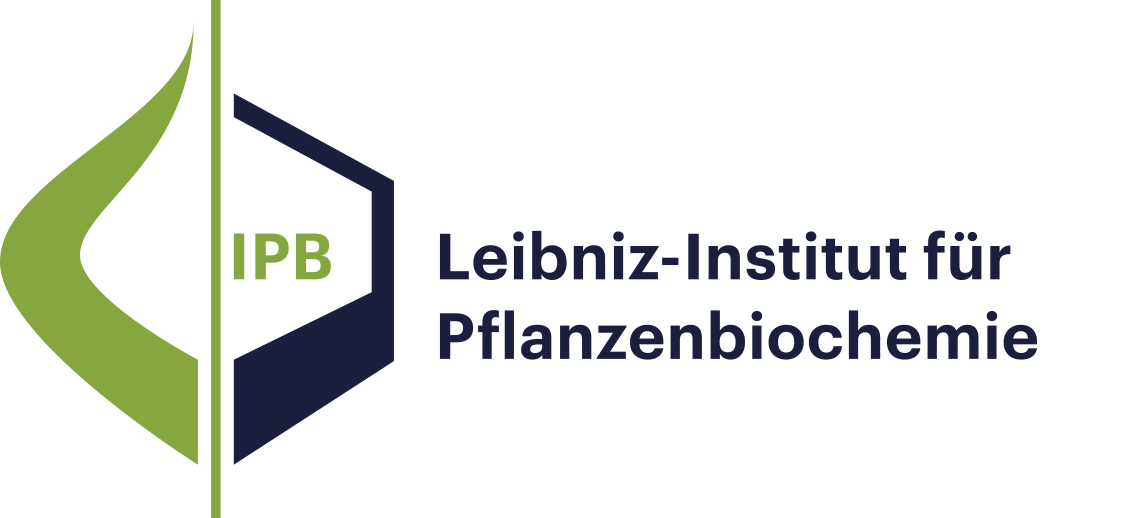Publikationen - Molekulare Signalverarbeitung
- Ergebnisse als:
- Druckansicht
- Endnote (RIS)
- BibTeX
- Tabelle: CSV | HTML
Publikation
Publikation
Diese Seite wurde zuletzt am 15 Aug 2012 geändert.
Leitbild und Forschungsprofil
Molekulare Signalverarbeitung
Natur- und Wirkstoffchemie
Biochemie pflanzlicher Interaktionen
Stoffwechsel- und Zellbiologie
Unabhängige Nachwuchsgruppen
Program Center MetaCom
Publikationen
Gute Wissenschaftliche Praxis
Forschungsförderung
Netzwerke und Verbundprojekte
Symposien und Kolloquien
Alumni-Forschungsgruppen
Publikationen
Publikationen - Molekulare Signalverarbeitung
Publikation
The induced defense response in plants towards herbivores is mainly regulated by jasmonates and leads to the accumulation of so-called jasmonate-induced proteins. Recently, a jasmonate (JA) inducible lectin called Nicotiana tabacum agglutinin or NICTABA was discovered in tobacco (N. tabacum cv Samsun) leaves. Tobacco plants also accumulate the lectin after insect attack by caterpillars. To study the functional role of NICTABA, the accumulation of the JA precursor 12-oxophytodienoic acid (OPDA), JA as well as different JA metabolites were analyzed in tobacco leaves after herbivory by larvae of the cotton leafworm (Spodoptera littoralis) and correlated with NICTABA accumulation. It was shown that OPDA, JA as well as its methyl ester can trigger NICTABA accumulation. However, hydroxylation of JA and its subsequent sulfation and glucosylation results in inactive compounds that have lost the capacity to induce NICTABA gene expression. The expression profile of NICTABA after caterpillar feeding was recorded in local as well as in systemic leaves, and compared to the expression of several genes encoding defense proteins, and genes encoding a tobacco systemin and the allene oxide cyclase, an enzyme in JA biosynthesis. Furthermore, the accumulation of NICTABA was quanti-fied after S. littoralis herbivory and immunofluorescence microscopy was used to study the localization of NICTABA in the tobacco leaf.
Publikation
Plants can metabolize sulfate by two pathways, which branch at the level of adenosine 5′-phosphosulfate (APS). APS can be reduced to sulfide and incorporated into Cys in the primary sulfate assimilation pathway or phosphorylated by APS kinase to 3′-phosphoadenosine 5′-phosphosulfate, which is the activated sulfate form for sulfation reactions. To assess to what extent APS kinase regulates accumulation of sulfated compounds, we analyzed the corresponding gene family in Arabidopsis thaliana. Analysis of T-DNA insertion knockout lines for each of the four isoforms did not reveal any phenotypical alterations. However, when all six combinations of double mutants were compared, the apk1 apk2 plants were significantly smaller than wild-type plants. The levels of glucosinolates, a major class of sulfated secondary metabolites, and the sulfated 12-hydroxyjasmonate were reduced approximately fivefold in apk1 apk2 plants. Although auxin levels were increased in the apk1 apk2 mutants, as is the case for most plants with compromised glucosinolate synthesis, typical high auxin phenotypes were not observed. The reduction in glucosinolates resulted in increased transcript levels for genes involved in glucosinolate biosynthesis and accumulation of desulfated precursors. It also led to great alterations in sulfur metabolism: the levels of sulfate and thiols increased in the apk1 apk2 plants. The data indicate that the APK1 and APK2 isoforms of APS kinase play a major role in the synthesis of secondary sulfated metabolites and are required for normal growth rates.
Diese Seite wurde zuletzt am 15 Aug 2012 geändert.

